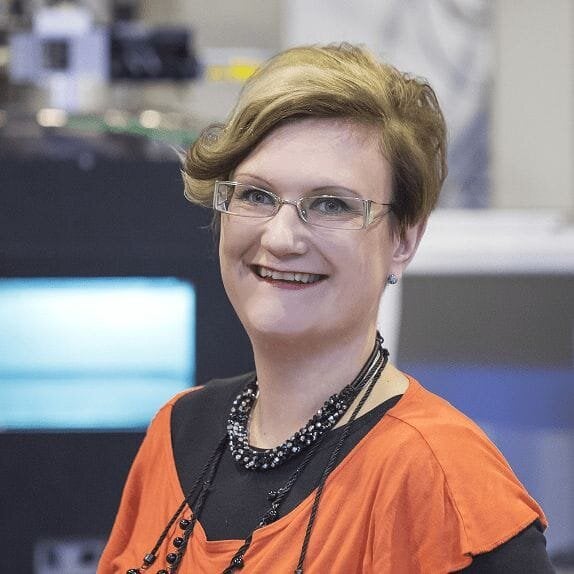![Heidi Piili [Source: Women in 3D Printing]](https://fabbaloo.com/wp-content/uploads/2020/05/image-asset_img_5eb08eb1f128b.jpg)
Heidi Piili is working as a research scientist at the laboratory of Laser Materials Processing (LUT Laser) of Lappeenranta University of Technology (LUT), in Finland.
She did her Master’s degree in 2003 at Lappeenranta University of Technology. While she worked at EOS in 2017, her main mission was to develop additive manufacturing of metallic materials. Heid has more than 16 years´ experience of laser processing (cutting, micro/mill processing, welding etc.) of various different materials.
Her doctoral thesis in 2013 was about characterization and mathematical modeling of the interaction between laser beam and material. She also graduated in 2015 as a professional teacher from Häme University of Applied Sciences. She has more than 110 international publications in the field of laser technology and additive manufacturing.
Nora Toure: Heidi, could you let us know about your background and what brought you to 3D printing in the first place?
Heidi Piili: My background is as a research scientist in the field of laser technology since 2002 at LUT University. I graduated as M.Sc.(Tech.) in 2003 and as D.Sc. (Tech.) in 2013 at LUT University.
I got a degree of docent in 2017 in field of metallic additive manufacturing, more closely powder bed fusion of metallic materials. Our research group started doing research in the field of additive manufacturing in 2009, and we got our first metal AM-device in May 2011. During years, I have been involved in national and international projects (both academic and industrial projects) related to laser technology and additive manufacturing, and I have also been doing education for M.Sc. and D.Sc. students and training for industrial partners in those fields.
I was also working at EOS Finland in 2017 as an R&D engineer, and this experience really opened my eyes to the magnitude of additive manufacturing. As our research group started doing research in the field of additive manufacturing, I immediately knew that this is something I would like to work with. It really hit me!
Nora Toure: Can you describe your very first experience with 3D Printing?
Heidi Piili: In February 2009, I visited EOS Finland in Turku, to see their facilities and activities in metallic additive manufacturing. It was very mind-blowing to see that all, and I knew immediately that I would like to work in this field for the rest of my life.
Nora Toure: You are a research scientist at the Lappeenranta University of Technology. Can you tell us a bit more about your field of research?
Heidi Piili: My specialty area in additive manufacturing is the monitoring of additive manufacturing of metallic materials. I have been working with monitoring since 2006 and my doctoral thesis was about monitoring, as well. By monitoring, I mean real-time detection of powder bed fusion of metallic materials by the assist of different sensors and high-speed cameras. Temperature and emitted radiation released from the process can be for example detected.
Generally, the topic of research at LUT University in the field of additive manufacturing covers for example case studies and feasibility studies for national and international industrial partners. Academically, we study basic phenomena (such as laser beam and material interaction) occurring during powder bed fusion of metallic materials.
LUT University has also a strong role in Finland in the field of education of additive manufacturing. We have had education for M.Sc. students since 2012. We have also been doing a lot of industrial training in Finland.
Read the rest at Women In 3D Printing

